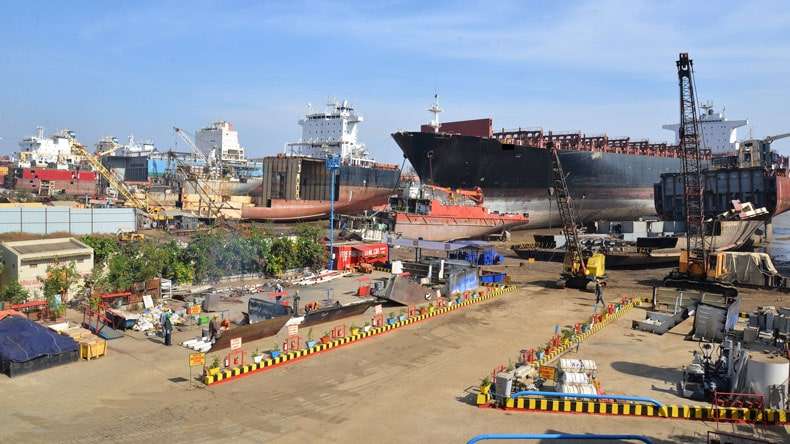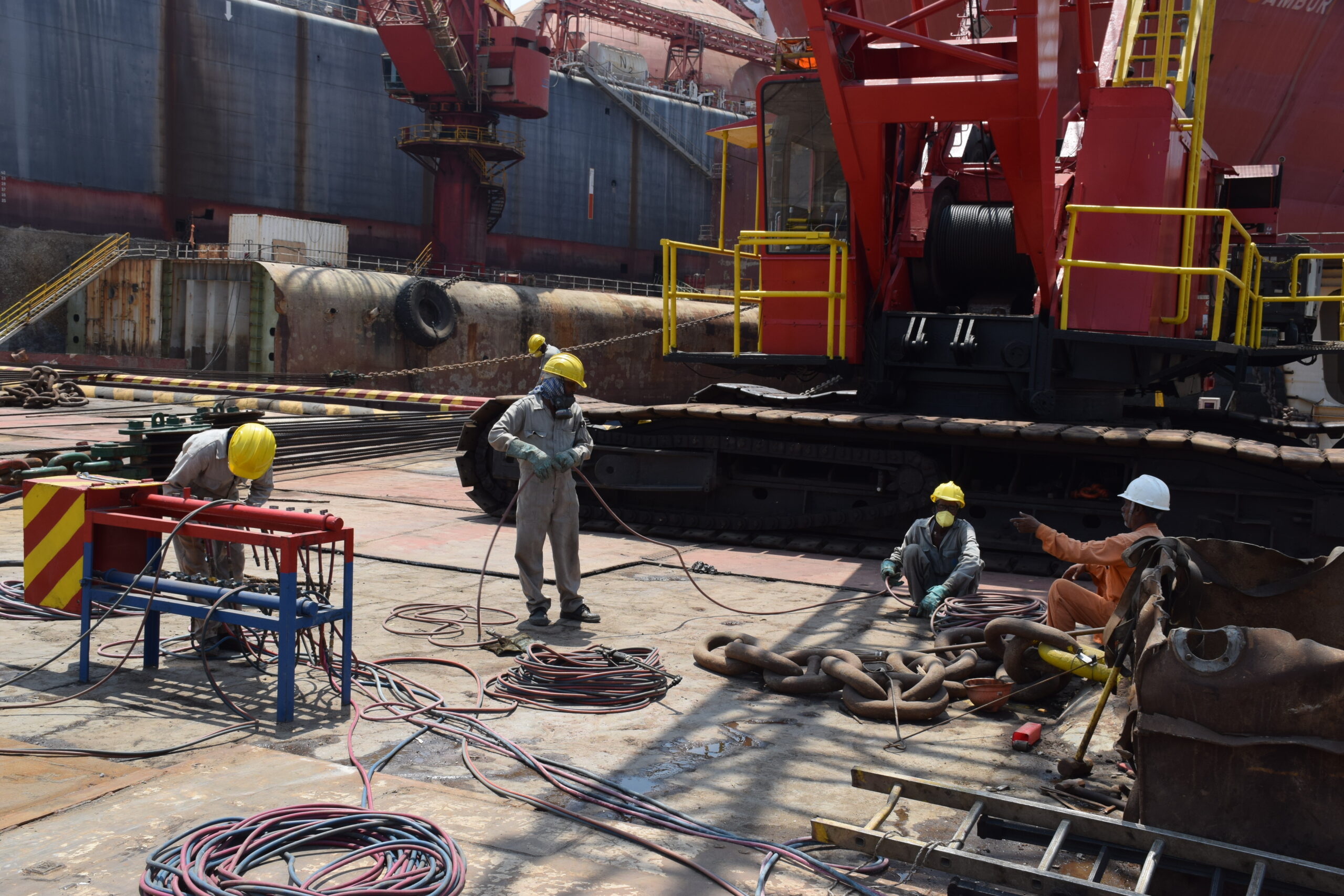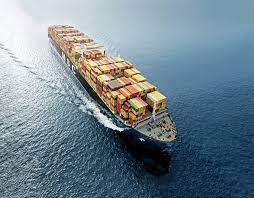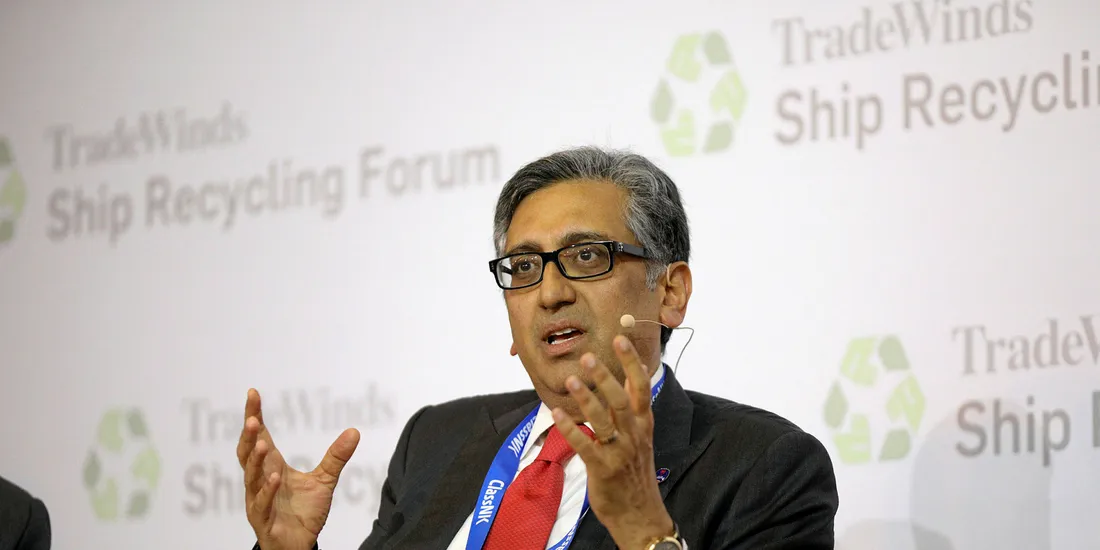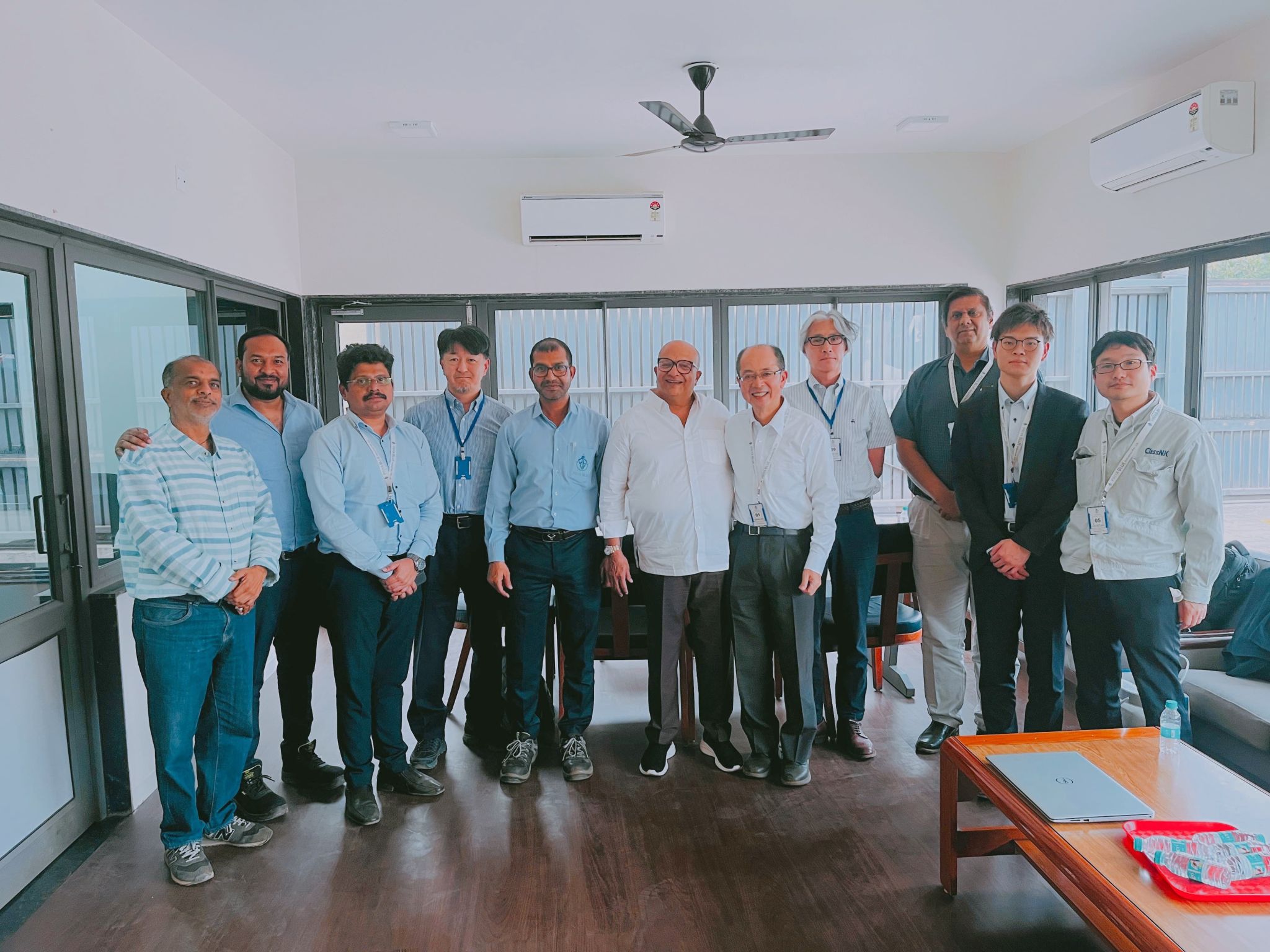A Map from 1995 Still Decides Who Can Recycle Ships
In the complex and evolving world of ship recycling, one outdated map continues to shape the global playing field. Despite three decades of progress, the decision on who can and cannot recycle ships still rests largely on a framework drawn in 1995 — a framework that many in the industry say no longer reflects the realities of today’s world.
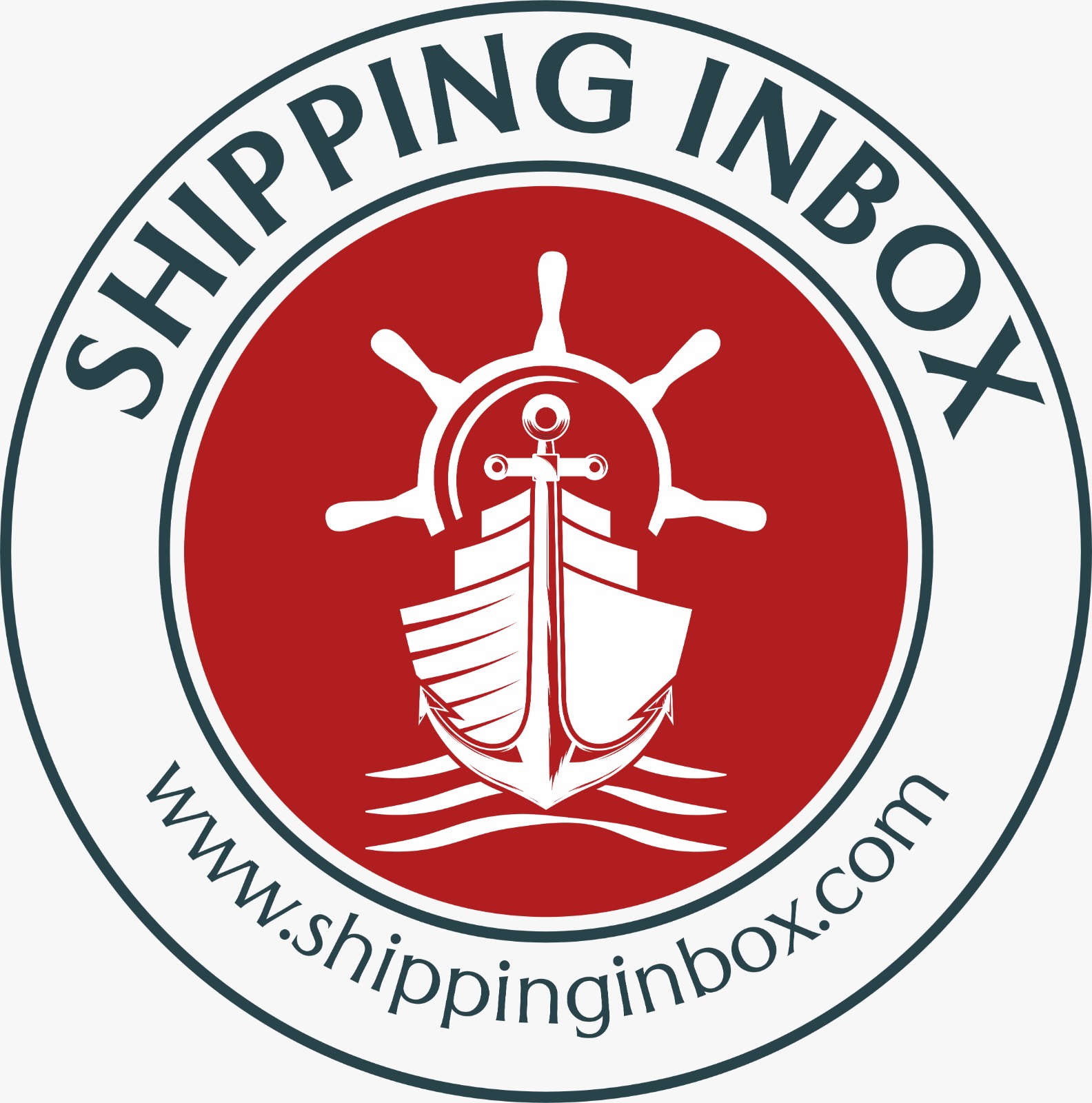
At the centre of this debate is the EU Ship Recycling Regulation (EU SRR), a rule designed to ensure that end-of-life ships from European owners are dismantled in a safe and environmentally responsible manner. To meet that requirement, operators are expected to send their ships only to facilities included on the EU Ship Recycling List, a register of yards officially approved under the regulation.
For ship recycling yards, being included on this list is not merely a matter of prestige — it is a question of survival. Many European shipowners have policies requiring their end-of-life tonnage to be recycled exclusively at EU-approved yards. Without that stamp of approval, even the most advanced facilities are effectively locked out of a significant portion of the global market.
But the list itself comes with a built-in bias, and one rooted in historical geopolitics rather than current capability.
A Legacy of the Basel Convention
To understand this imbalance, one must look back to the Basel Convention on the Control of Transboundary Movements of Hazardous Wastes and Their Disposal, adopted in 1989 and implemented in the early 1990s. The convention was created to prevent the uncontrolled dumping of hazardous waste from developed nations into developing ones — a practice that had caused severe environmental and public health disasters in parts of Africa and Asia.
Later, in 1995, the Basel Ban Amendment was introduced, effectively banning the export of hazardous waste from countries classified as “developed” to those classified as “developing.” Under this system, the world was divided into Annex VII and non-Annex VII countries.
Annex VII countries included all members of the Organisation for Economic Co-operation and Development (OECD), the European Union, and Liechtenstein — essentially the club of wealthy, industrialized nations at the time. Every country outside this group was deemed non-Annex VII, and the export of hazardous waste from Annex VII to non-Annex VII countries was prohibited under the amendment.
That division — written into international law in 1995 — still dictates how the EU views ship recycling today.
A 30-Year-Old Map in a 21st-Century World
When the Basel map was drawn, the global economic landscape looked very different. Many countries that were considered developing in the 1990s have since transformed into industrial powerhouses. Nations across the Gulf region, for example, have built state-of-the-art ship repair and recycling facilities with robust environmental controls and advanced waste management systems.
Likewise, parts of South and Southeast Asia — once criticised for unsafe and polluting shipbreaking practices — now host modern yards certified under the Hong Kong International Convention for the Safe and Environmentally Sound Recycling of Ships (HKC). These facilities have invested heavily in infrastructure, worker safety, and environmental protection.
Yet despite these advances, such countries remain excluded from the EU Ship Recycling List, not because of poor performance but because they are not part of Annex VII.
According to the February 2025 (14th edition) of the EU Ship Recycling List, there are 43 approved facilities:
-
31 yards located within the EU, Norway, and the United Kingdom,
-
11 in Türkiye, and
-
1 in the United States.
Not a single yard outside the OECD framework — no matter how advanced or compliant — has been formally recognized.
As one ship recycling expert recently remarked, “It’s not about capability. It’s about history.”
Performance Beyond Borders
The exclusion has prompted many ship recycling yards in non-Annex VII countries to seek alternative paths toward recognition. Increasingly, they are turning to independent third-party auditors — including leading international classification societies and environmental verification agencies — to certify their operations against the stringent standards of the EU SRR.
These audits assess critical aspects of yard performance, including hazardous waste management, worker welfare, environmental monitoring, and the traceability of recycled materials. The results often show that modern yards in places like the UAE, India, or Bahrain are capable of meeting — and in some cases exceeding — the standards applied within Europe.
For shipowners focused on Environmental, Social, and Governance (ESG) commitments, this growing evidence presents a dilemma. On one hand, they must comply with EU regulations; on the other, they recognize that excluding efficient, sustainable yards simply because of their geographic location undermines the industry’s broader environmental goals.
“It’s paradoxical,” says a European ship recycling consultant. “We have yards outside Europe that have invested millions in HKC compliance, worker safety, and waste treatment systems, yet they cannot be officially recognized because of a map drawn thirty years ago. The regulation is meant to encourage sustainability, but in some ways, it punishes those who have made real progress.”
A Question of Fairness and Flexibility
Critics argue that the EU Ship Recycling Regulation, though well-intentioned, effectively enshrines a discriminatory system. It does not evaluate facilities based solely on their actual performance, but on whether they fall within the geopolitical boundaries of Annexe VII.
This, they say, is particularly problematic in an era where the Hong Kong Convention (HKC) — the global framework adopted by the International Maritime Organization (IMO) — is finally coming into force. The HKC establishes international standards for safe and environmentally sound ship recycling, applicable to all countries regardless of their Annexe status.
With the HKC’s expected global ratification and implementation, many in the industry believe that the EU’s adherence to the old Basel-based map will soon become untenable.
“The spirit of the Basel Convention was about preventing hazardous waste dumping,” one legal expert on maritime regulation notes. “But ship recycling is not waste dumping — it’s resource recovery. The EU should be leading the way in promoting responsible recycling globally, not restricting it based on outdated classifications.”
Legal and ESG Implications
Importantly, there is no absolute legal obstacle preventing EU-based shipowners from using non-Annexe VII yards, provided that proper procedures and oversight are in place. Several legal interpretations suggest that as long as the recycling process adheres to strict safety, environmental, and traceability standards — and is transparently documented — compliance can be achieved without violating the Basel Ban.
This nuanced understanding is gaining traction, especially as the maritime sector faces growing pressure to align with ESG principles. Investors, insurers, and cargo clients are increasingly demanding full lifecycle accountability — including the end-of-life phase of vessels.
In that context, the geographic exclusion of capable facilities appears counterproductive. By allowing only a small pool of approved yards, the EU risks pushing shipowners toward more expensive or logistically impractical options, potentially leading to “shadow recycling” outside regulated frameworks.
The Call for Reform
As the global shipping and recycling industries look ahead, the question looms large: Should a classification drawn in 1995 still dictate who is allowed to recycle ships in 2025?
The answer, according to many in the industry, is no. The EU’s system, they argue, must evolve to reflect current realities — where capability, compliance, and transparency, not geography, define responsible recycling.
A growing chorus of voices within the maritime community is urging the EU to revisit its regulatory approach, allowing for the inclusion of non-Annexe VII countries that demonstrably meet the standards of environmental and worker protection required under the EU SRR.
Until that happens, a paradox will remain: advanced, HKC-compliant yards in modern economies — with world-class infrastructure and verified environmental management systems — will continue to be sidelined by a map frozen in time.
As one ship recycling executive summed it up, “We’ve built the future, but we’re still being judged by the past.”
Thirty years after the Basel Ban Amendment drew its defining line between “developed” and “developing” nations, that same line continues to shape the global ship recycling landscape — often to the detriment of innovation, sustainability, and fairness.
If the maritime world truly aims for responsible and circular ship recycling, it must look beyond outdated geopolitical boundaries. The time has come to redraw the map — not on paper, but in policy — to ensure that what defines a good ship recycling yard is not where it is located, but how it performs.
Author: shipping inbox
shipping and maritime related web portal




